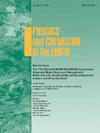利用WRF模式对锡金喜马拉雅北部强降水引起的GLOF事件的高分辨率分析和预测
IF 3
3区 地球科学
Q2 GEOSCIENCES, MULTIDISCIPLINARY
引用次数: 0
摘要
锡金喜马拉雅北部拥有许多高海拔冰川湖,其中许多冰川湖表现出快速扩张,使它们极易受到冰湖溃决洪水(GLOFs)的影响。这些事件向下游释放了大量的水,造成了重大的水文气象灾害。锡金下游地区,特别是Teesta盆地下游,由于直接降水和上游冰川湖流量增加而遭受洪水灾害。其中,作为Teesta盆地最大的湖泊之一,南Lhonak湖(SLL)经历了快速的体积扩张,成为GLOF灾害的关键热点。本研究探讨了WRF模型在全球气候变化相关研究中的应用,为理解和预测此类事件提供了一种新的方法。本研究利用WRF (Weather Research and Forecasting)模式对锡金地区的强降水事件进行了模拟和分析,重点研究了2023年10月3日至4日在SLL地区发生的由glof触发的降水事件。结果表明,强降水,加上冰块不稳定和侧冰碛破坏是灾难性GLOF的主要触发因素。模式模拟使用了由DGRE-DRDO在NIT Sikkim安装的新部署的x波段多普勒天气雷达(DWR)获得的高分辨率降水数据。由此产生的溃决洪水对沿线的定居点、基础设施和水电工程造成了广泛的破坏,并向下游延伸了数十公里。研究结果强调,迫切需要一个综合监测框架,将高分辨率数值天气预报、基于卫星的冰川湖监测和实时雷达观测结合起来。这项研究是WRF模式在锡金与全球气候论坛相关的降水预报中的首次应用,展示了其在加强该地区预警能力和风险缓解战略方面的潜力。本文章由计算机程序翻译,如有差异,请以英文原文为准。
High-resolution analysis and prediction of heavy precipitation-induced GLOF events in North Sikkim Himalayas using the WRF model
The northern Sikkim Himalaya hosts numerous high-altitude glacial lakes, many of which exhibit rapid expansion, rendering them highly susceptible to Glacial Lake Outburst Floods (GLOFs). These events release substantial volumes of water downstream, posing significant hydrometeorological hazards. The downstream regions of Sikkim, particularly the lower Teesta basin, experience flood hazards due to both direct precipitation and enhanced discharge from upstream glacial lakes. Among these, South Lhonak Lake (SLL), one of the largest lakes in the Teesta basin, has undergone rapid volumetric expansion, making it a critical hotspot for GLOF hazards. The study explores the application of the WRF model for GLOF-related research, offering a novel approach to understanding and predicting such events. This study used Weather Research and Forecasting (WRF) model to simulate and analyze heavy precipitation events across Sikkim, with a specific focus on the GLOF-triggering precipitation event of October 3–4, 2023, over the SLL region. The results suggest that intense precipitation, coupled with ice mass instability and lateral moraine failure, acted as the primary triggers for the catastrophic GLOF. Model simulations were conducted using high-resolution precipitation data acquired from the newly deployed X-band Doppler Weather Radar (DWR) installed by DGRE-DRDO at NIT Sikkim. The resulting outburst flood caused extensive damage to settlements, infrastructure, and hydropower projects along its course, extending several tens of kilometers downstream. The findings underscore the urgent need for an integrated monitoring framework combining high-resolution numerical weather prediction, satellite-based glacial lake surveillance, and real-time radar observations. This study represents the first application of the WRF model for GLOF-related precipitation forecasting in Sikkim, demonstrating its potential for enhancing early warning capabilities and risk mitigation strategies in the region.
求助全文
通过发布文献求助,成功后即可免费获取论文全文。
去求助
来源期刊

Physics and Chemistry of the Earth
地学-地球科学综合
CiteScore
5.40
自引率
2.70%
发文量
176
审稿时长
31.6 weeks
期刊介绍:
Physics and Chemistry of the Earth is an international interdisciplinary journal for the rapid publication of collections of refereed communications in separate thematic issues, either stemming from scientific meetings, or, especially compiled for the occasion. There is no restriction on the length of articles published in the journal. Physics and Chemistry of the Earth incorporates the separate Parts A, B and C which existed until the end of 2001.
Please note: the Editors are unable to consider submissions that are not invited or linked to a thematic issue. Please do not submit unsolicited papers.
The journal covers the following subject areas:
-Solid Earth and Geodesy:
(geology, geochemistry, tectonophysics, seismology, volcanology, palaeomagnetism and rock magnetism, electromagnetism and potential fields, marine and environmental geosciences as well as geodesy).
-Hydrology, Oceans and Atmosphere:
(hydrology and water resources research, engineering and management, oceanography and oceanic chemistry, shelf, sea, lake and river sciences, meteorology and atmospheric sciences incl. chemistry as well as climatology and glaciology).
-Solar-Terrestrial and Planetary Science:
(solar, heliospheric and solar-planetary sciences, geology, geophysics and atmospheric sciences of planets, satellites and small bodies as well as cosmochemistry and exobiology).
 求助内容:
求助内容: 应助结果提醒方式:
应助结果提醒方式:


